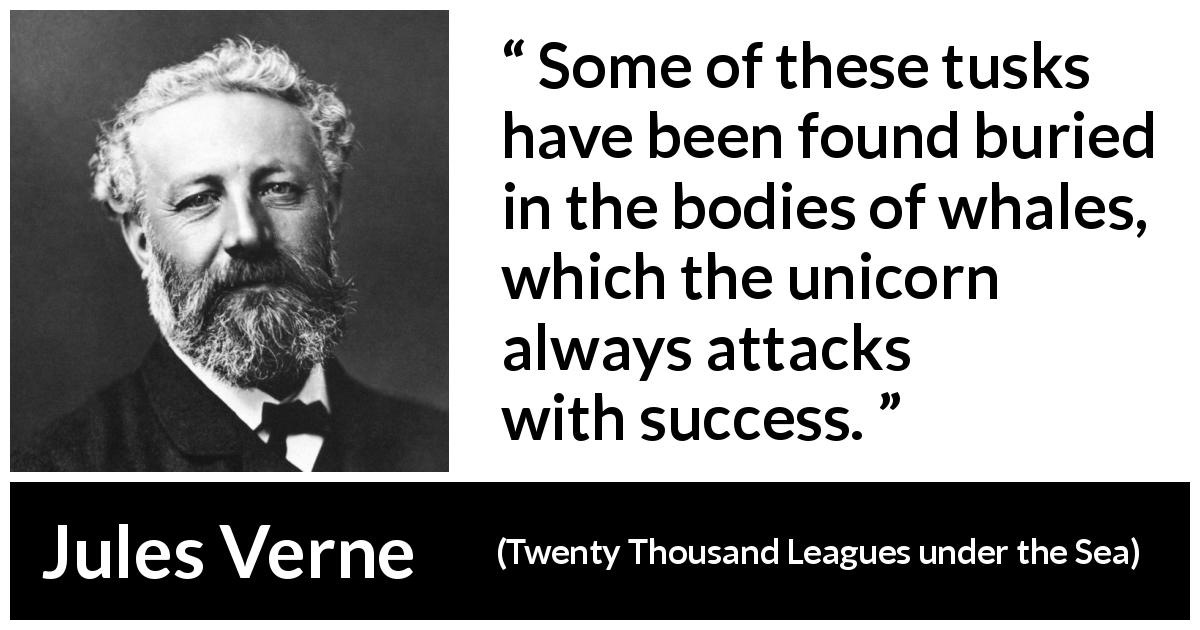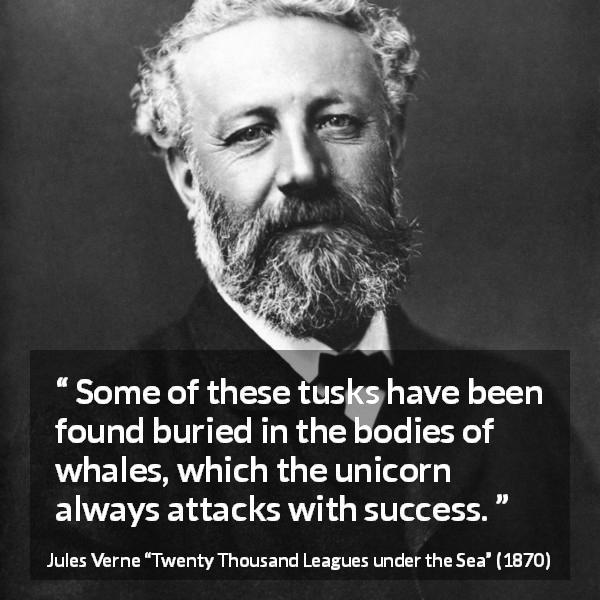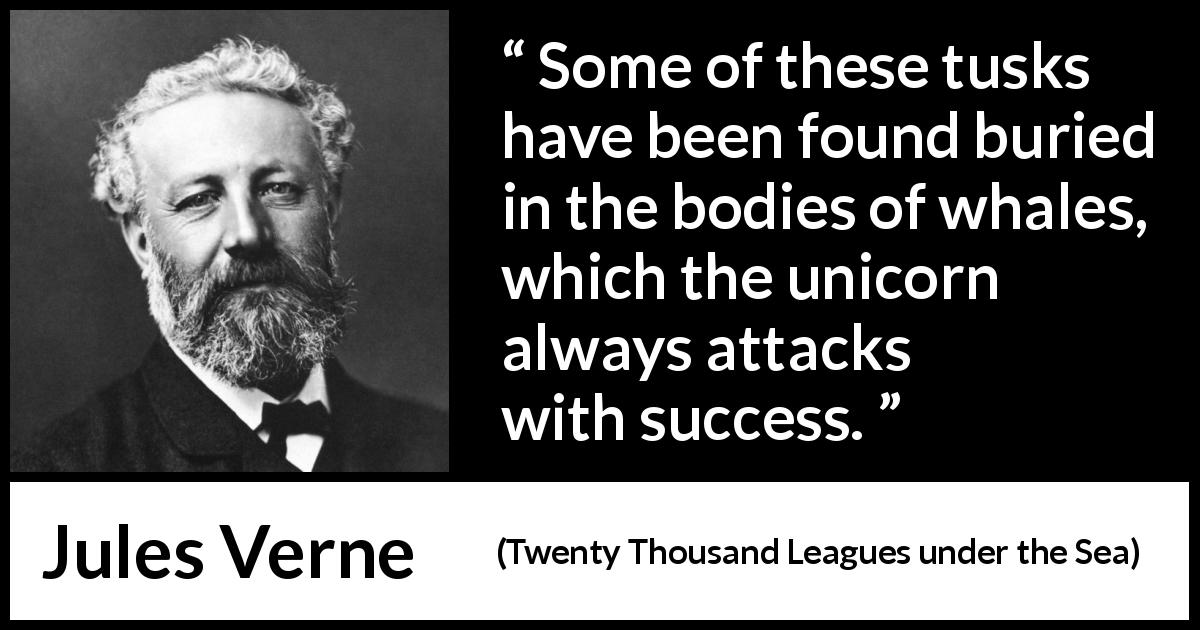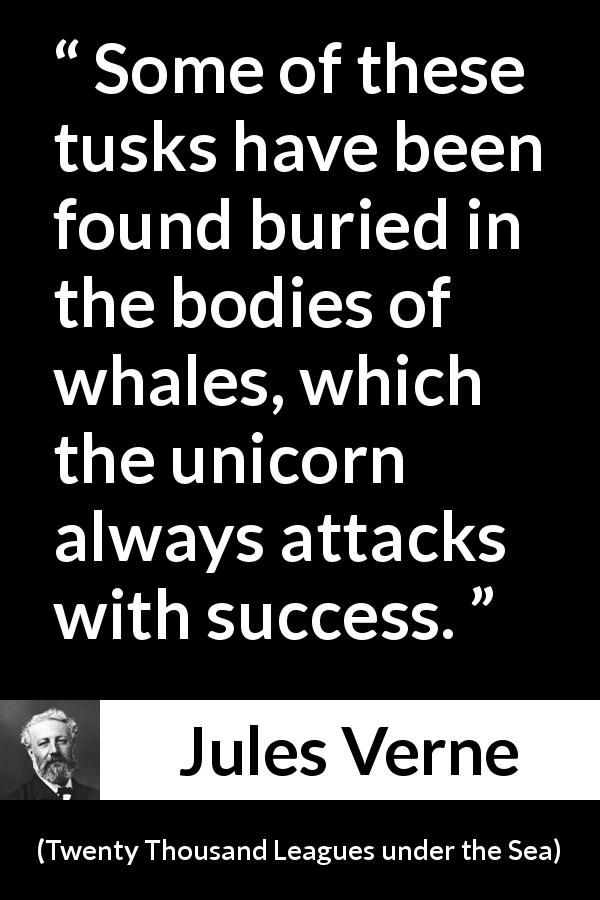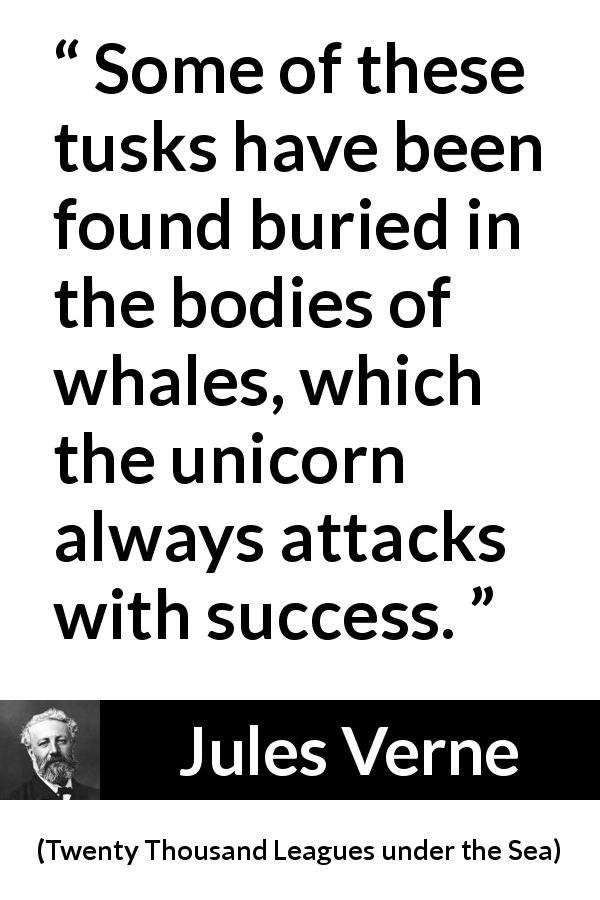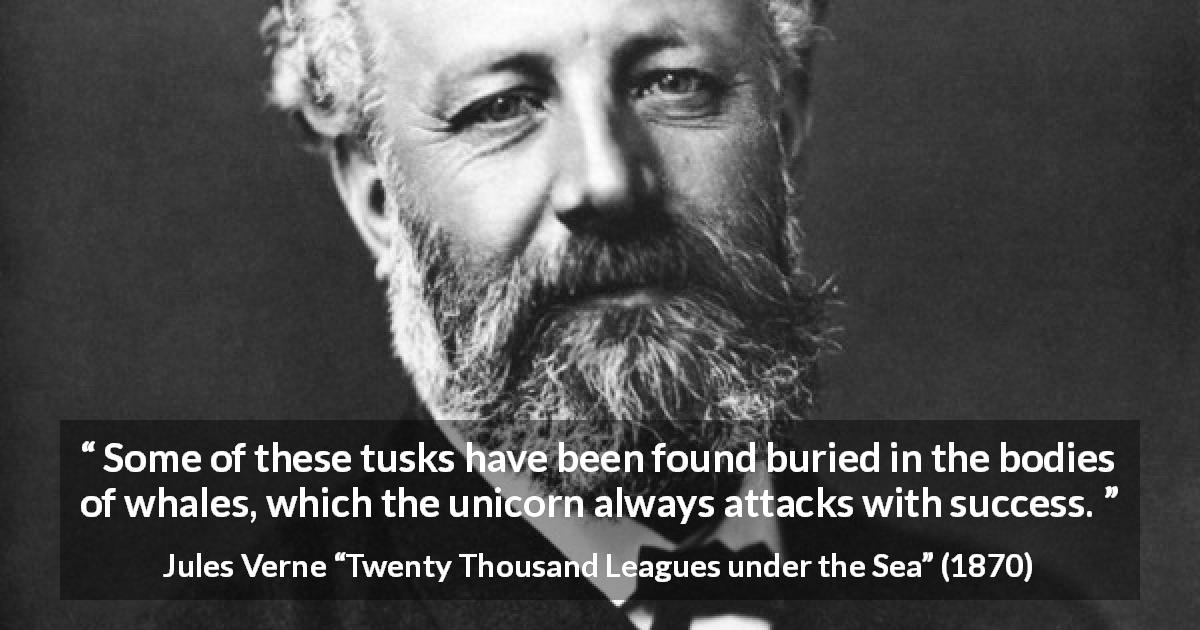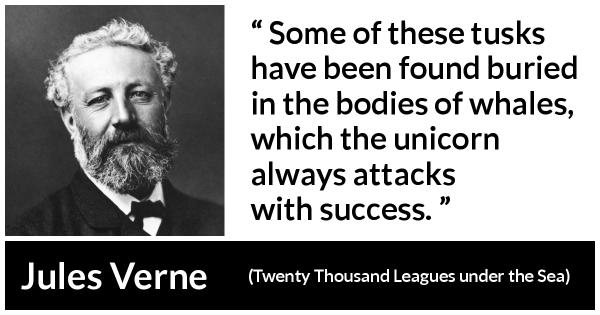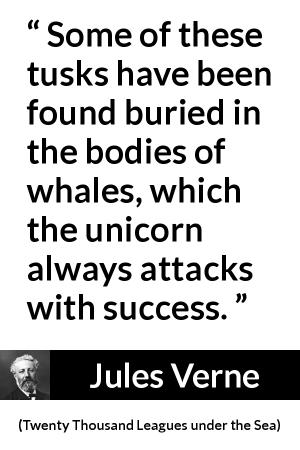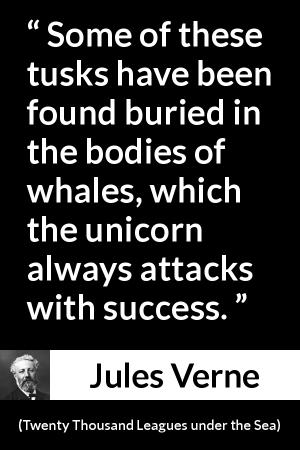“ Some of these tusks have been found buried in the bodies of whales, which the unicorn always attacks with success. ”
Jules Verne, Twenty Thousand Leagues under the Sea (1870). copy citation
| Author | Jules Verne |
|---|---|
| Source | Twenty Thousand Leagues under the Sea |
| Topic | whale unicorn tusk |
| Date | 1870 |
| Language | English |
| Reference | |
| Note | Translated by Lewis Page Mercier |
| Weblink | http://www.gutenberg.org/files/164/164-h/164-h.htm |
Context
“It will have the proportions determined by the officers of the Shannon, the instrument required by the perforation of the Scotia, and the power necessary to pierce the hull of the steamer.
"Indeed, the narwhal is armed with a sort of ivory sword, a halberd, according to the expression of certain naturalists. The principal tusk has the hardness of steel. Some of these tusks have been found buried in the bodies of whales, which the unicorn always attacks with success. Others have been drawn out, not without trouble, from the bottoms of ships, which they had pierced through and through, as a gimlet pierces a barrel. The Museum of the Faculty of Medicine of Paris possesses one of these defensive weapons, two yards and a quarter in length, and fifteen inches in diameter at the base.” source
"Indeed, the narwhal is armed with a sort of ivory sword, a halberd, according to the expression of certain naturalists. The principal tusk has the hardness of steel. Some of these tusks have been found buried in the bodies of whales, which the unicorn always attacks with success. Others have been drawn out, not without trouble, from the bottoms of ships, which they had pierced through and through, as a gimlet pierces a barrel. The Museum of the Faculty of Medicine of Paris possesses one of these defensive weapons, two yards and a quarter in length, and fifteen inches in diameter at the base.” source
